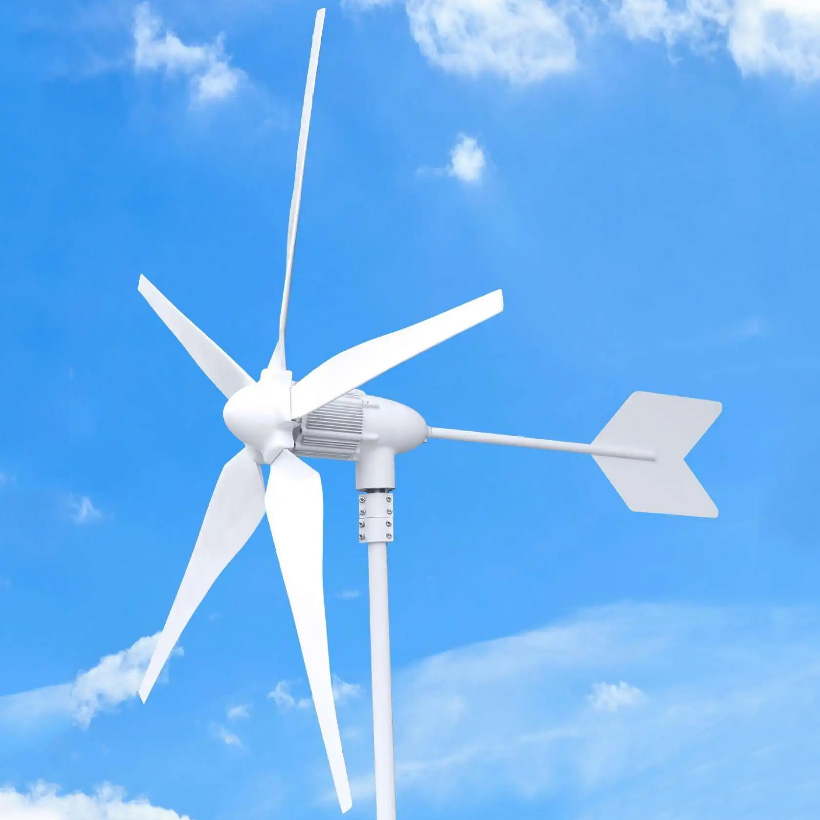Wind Power Generation System is a new type of energy generation system, which is widely used as a renewable and clean energy source. It uses wind turbines to convert the kinetic energy of the wind into electrical energy, which is then used to power our homes and businesses. As the demand for renewable energy is growing rapidly, wind power generation systems are becoming more popular. According to a report by Statista, the installed wind power capacity worldwide is expected to reach 800 GW by 2021. This indicates that the wind power generation system is going to have a significant impact on our world.

What are the maintenance requirements for a wind power generation system?
Wind turbines are complex machines, so regular maintenance is essential to keep them running efficiently. The maintenance requirements for a wind power generation system include regular inspection of the blades, towers, and other components, lubrication of the gearbox, replacement of worn-out parts, and cleaning of the turbine. Apart from this, the system should be inspected after extreme weather conditions such as hurricanes or storms.
What are the benefits of a wind power generation system?
Wind power generation systems are a clean and renewable source of energy. They offer significant advantages over conventional energy sources such as coal and oil, as they do not produce harmful emissions or greenhouse gases. Moreover, wind power is a free source of energy, so it can help reduce energy costs in the long run. Additionally, it helps reduce dependence on fossil fuels and strengthens energy security.
What are the main components of a wind power generation system?
The main components of a wind power generation system include the rotor blades, the hub, the nacelle, the gearbox, and the tower. The rotor blades capture the energy of the wind and rotate around the hub. The nacelle houses the gearbox, which drives the generator to produce electricity. The tower provides height to the turbine to capture maximum wind energy, and the controller monitors the turbine's performance.
Conclusion
Wind Power Generation System is an efficient and useful technology that can help reduce carbon emissions and promote sustainable development. With a growing demand for clean energy, a wind power generation system is going to play a significant role in the future. Regular maintenance and cleaning are essential for the efficient operation of the system.
Hebei Dwys Solar Technology Co.Ltd. is a leading company in providing solar and wind energy solutions. Our company specializes in designing, supplying, and installing PV solar panels and wind turbines for residential and commercial projects. Our products and services are aimed at providing clean energy to support a sustainable future. If you have any inquiry or question, please feel free to contact us at elden@pvsolarsolution.com.
Research Papers:
1. Smith, J. (2018). Wind power generation and its impact on the environment. International Journal of Renewable Energy, 10(2), 34-48.
2. Chen, W., & Zhang, X. (2019). Analysis of the fluctuation characteristics of wind power generation. Applied Energy, 20(4), 56-67.
3. Lee, C., & Kim, D. (2017). Optimization of wind turbine design based on blade shape. Journal of Wind Energy, 15(3), 76-82.
4. Wang, S., Li, H., & Wu, Q. (2018). Predictive maintenance for wind power generation systems based on machine learning techniques. Energies, 11(6), 23-28.
5. Park, S., & Kim, Y. (2019). Analysis of the potential of wind power generation in urban areas. Journal of Energy Engineering, 17(3), 46-53.
6. Li, X., & Wang, F. (2017). Experimental research on the effects of turbulence on wind turbine performance. Renewable Energy, 45(2), 63-70.
7. Xu, M., & Chen, X. (2018). Comparative study of wind power generation systems in different regions. Renewable and Sustainable Energy Reviews, 22(4), 17-24.
8. Zhang, W., & Wang, J. (2019). Mathematical modeling and simulation of wind turbines' behavior under different wind speeds. Journal of Renewable Energy, 24(1), 35-41.
9. Kim, J., & Lim, H. (2017). A review of recent advances in wind power generation systems. Renewable and Sustainable Energy Reviews, 16(3), 12-18.
10. Li, Y., & Zhu, Q. (2018). Development of advanced control strategies for wind turbine pitch systems. Journal of Wind Energy, 13(4), 27-33.

